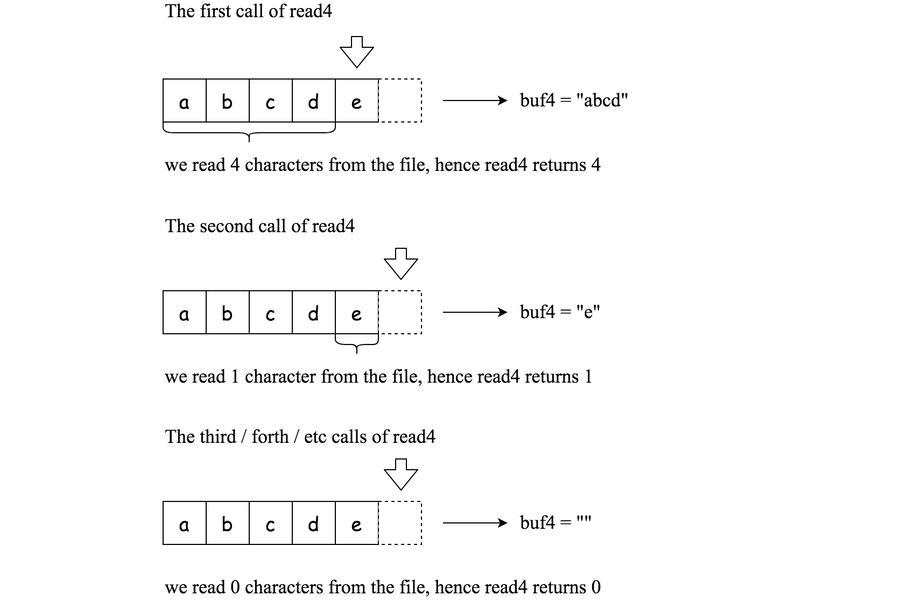LeetCode 157. Read N Characters Given Read4
Given a file and assume that you can only read the file using a given method read4, implement a method to read n characters.
Method read4:
The API read4 reads four consecutive characters from file, then writes those characters into the buffer array buf4.
The return value is the number of actual characters read.
Note that read4() has its own file pointer, much like FILE *fp in C.
Definition of read4:
Parameter: char[] buf4
Returns: int
buf4[] is a destination, not a source. The results from read4 will be copied to buf4[].Below is a high-level example of how read4 works:
File file("abcde"); // File is "abcde", initially file pointer (fp) points to 'a'
char[] buf4 = new char[4]; // Create buffer with enough space to store characters
read4(buf4); // read4 returns 4. Now buf4 = "abcd", fp points to 'e'
read4(buf4); // read4 returns 1. Now buf4 = "e", fp points to end of file
read4(buf4); // read4 returns 0. Now buf4 = "", fp points to end of fileMethod read:
By using the read4 method, implement the method read that reads n characters from file and store it in the buffer array buf. Consider that you cannot manipulate file directly.
The return value is the number of actual characters read.
Definition of read:
Note:
Consider that you cannot manipulate the file directly. The file is only accessible for
read4but not forread.The
readfunction will only be called once for each test case.You may assume the destination buffer array,
buf, is guaranteed to have enough space for storingncharacters.
Example 1:
Example 2:
Example 3:
Example 4:
Constraints:
1 <= file.length <= 500fileconsist of English letters and digits.1 <= n <= 1000
Solution
Last updated
Was this helpful?